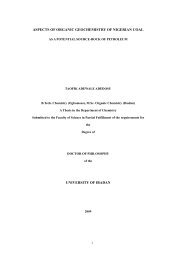View/Open - TWAS & OWSD Thesis Repository Home
View/Open - TWAS & OWSD Thesis Repository Home
View/Open - TWAS & OWSD Thesis Repository Home
You also want an ePaper? Increase the reach of your titles
YUMPU automatically turns print PDFs into web optimized ePapers that Google loves.
the available methods, the dialel crossing has been the more thoroughly used in<br />
almost cultivated species. Griffing proposed a dialel technique for determining the<br />
combining ability of lines and characterizing the nature of extent of gene action in<br />
both plants and animals. His approach has also been adapted to assess competition.<br />
Griffing's analysis allows the option to test for fixed (model 1) or random (model 2)<br />
effects. Griffing (1956) proposed four methods of diallel crossing; method 1 (full<br />
dialle), the P, F 1 and F 1 r are included; method 2 (half dialle), P and F 1 ’s included<br />
only; method 3 includes F 1 and F 1 r but no P and finally method 4 where F 1 included,<br />
but no reciprocal or parents. Total entries are (P 2 ), [p(p+1)/2], (P 2 -P) and [p(p-1)/2]<br />
respectively. Experimental material and the objective of the experiment are the main<br />
factors that determine the appropriate method that could be used. The reciprocal<br />
effects can be usefully employed to detect variation due to sex-linked genes and<br />
maternal effects (cytoplasmic inheritance). So, method 3 would be most useful.<br />
While in most combining ability analysis in which a chosen set of lines is used, the<br />
interesting is concentrated on the performance of F1’s. Therefore, there is no<br />
necessary to include the parental lines. But in some cases, it’s important to include<br />
the parents when the breeder want to synthesize new variety and if there is<br />
inbreeding occurs in the species, so it is advisable to use method 1 or 2. In plant and<br />
animal breeding, when a random set of lines is used, dialle crossing method 3 or 4 is<br />
again the most applicable.<br />
The term general combining ability (GCA) is the average performance of a<br />
parent in a series of hybrid combinations and is associated with the presence of<br />
additive effects of alleles and associations of the epistatic additive effect. While the<br />
specific combining ability (SCA) refers to those instances in which the performance<br />
of a hybrid is relatively better or worse than would be expected on the basis of the<br />
average performance of the parents involved (Sprague and Tatum 1942). The SCA<br />
shows the deviation on the average of their parental GCA and associated with<br />
dominance effect and epistasis involving dominance (Cruz and Vencovsky 1989).<br />
Through using these estimates, we can identify the best parents and hybrids for use<br />
in breeding program (Cruz and Regazzi 2001).<br />
17


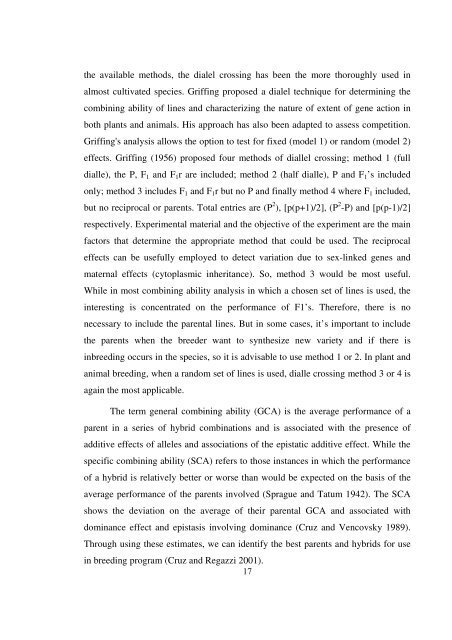

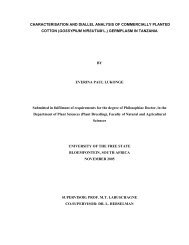


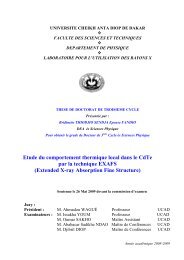
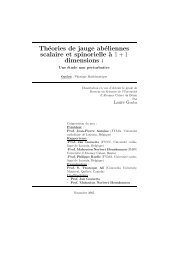
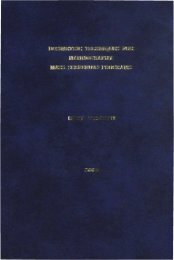

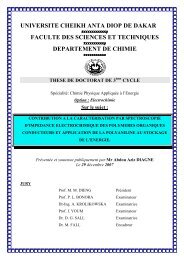
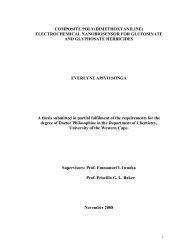

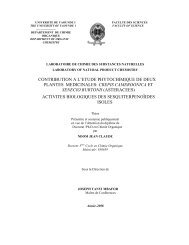
![SYNTHESIS AND ANTI-HIV ACTIVITY OF [d4U]-SPACER-[HI-236 ...](https://img.yumpu.com/30883288/1/190x245/synthesis-and-anti-hiv-activity-of-d4u-spacer-hi-236-.jpg?quality=85)
